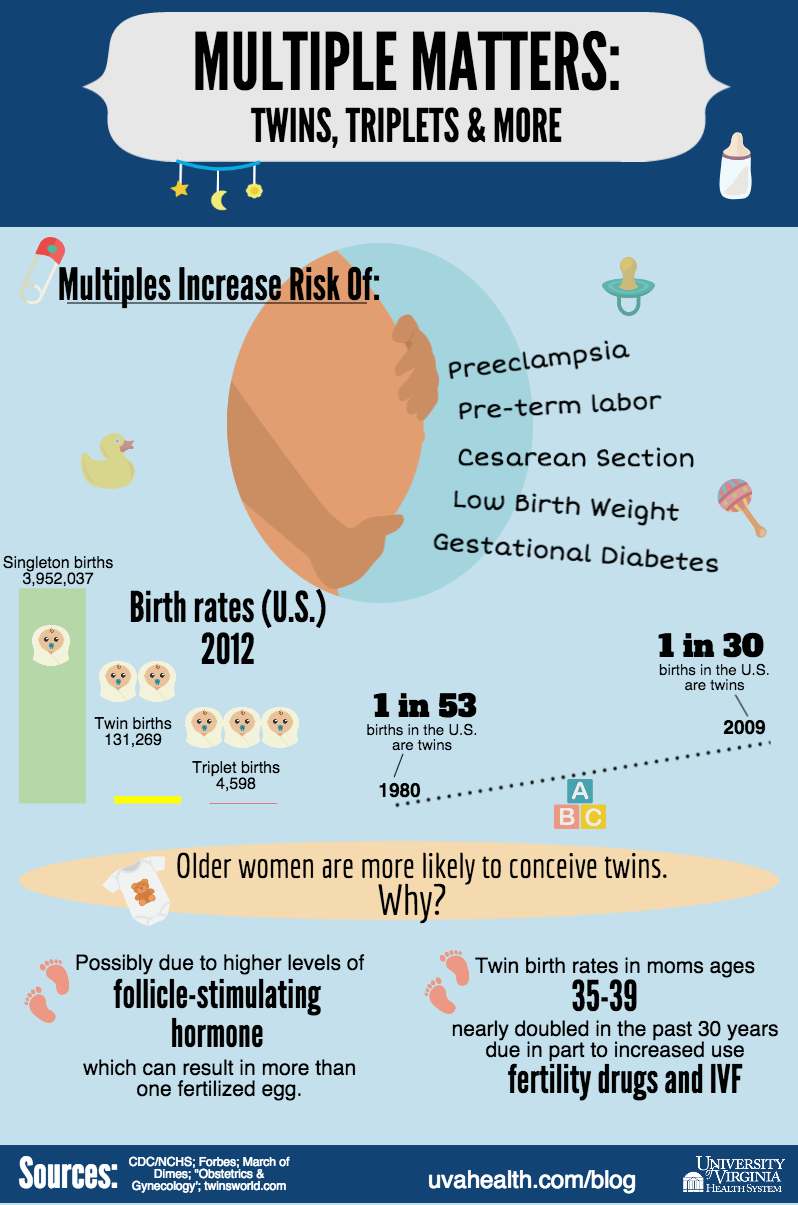You’re not alone if you’re pregnant with more than one baby. More recently, the numbers of multiple births have increased. Sometimes twins, triplets and more will look exactly the same (identical) whereas sometimes they look no more than typical siblings (fraternal).

Infographic text: Multiple Matters- Twins, Triplets & More
You’re not alone if you’re pregnant with more than one baby. More recently, the numbers of multiple births have increased.
- Multiples increase risk of:
- Preeclampsia
- Pre-term labor
- Cesarean section
- Low birth weight
- Gestational diabetes
- Birth rates (U.S.) 2012
- Singleton births: 3,952,037
- Twin births: 131,269
- Triplet births: 4,598
- 1980: 1 in 53 births in the U.S. are twins
- 2009: 1 in 30 births in the U.S. are twins
- Older women are more likely to conceive twins. Why?
- Possibly due to higher levels of follicle-stimulating hormone which can result in more than one fertilized egg
- Twin birth rates in moms ages 35-39 nearly double in the past 30 years due in part to increased use of fertility drugs and IVF
